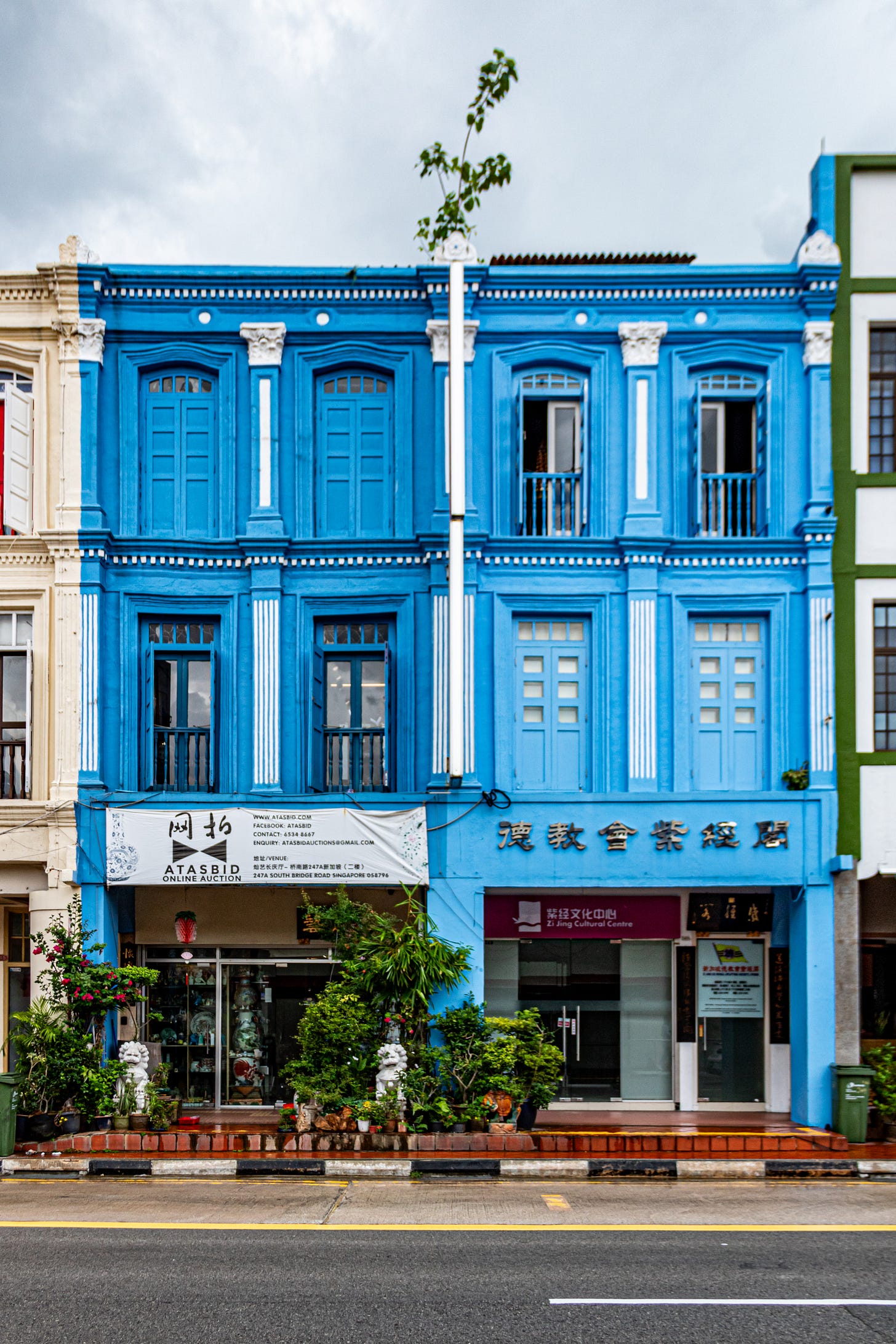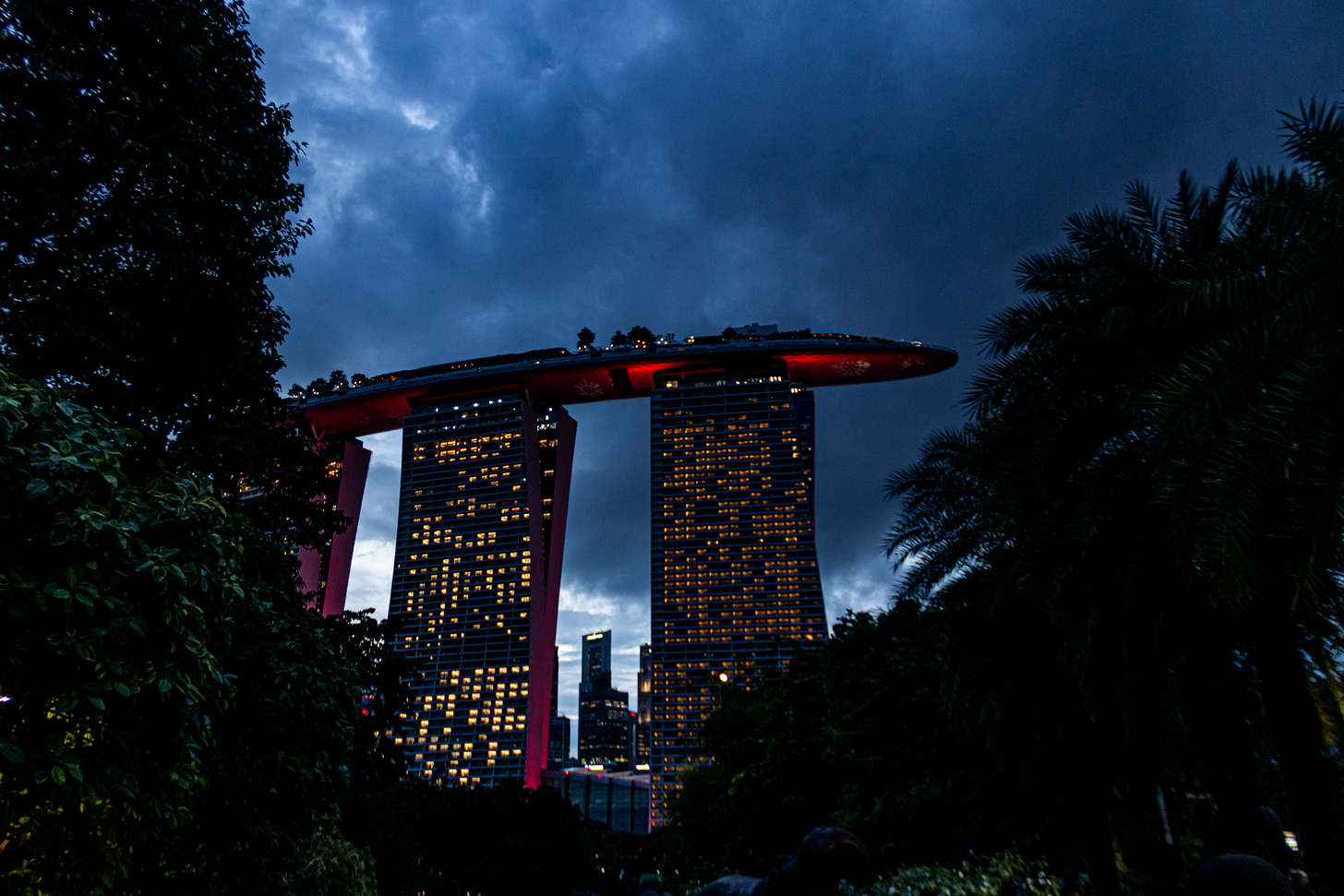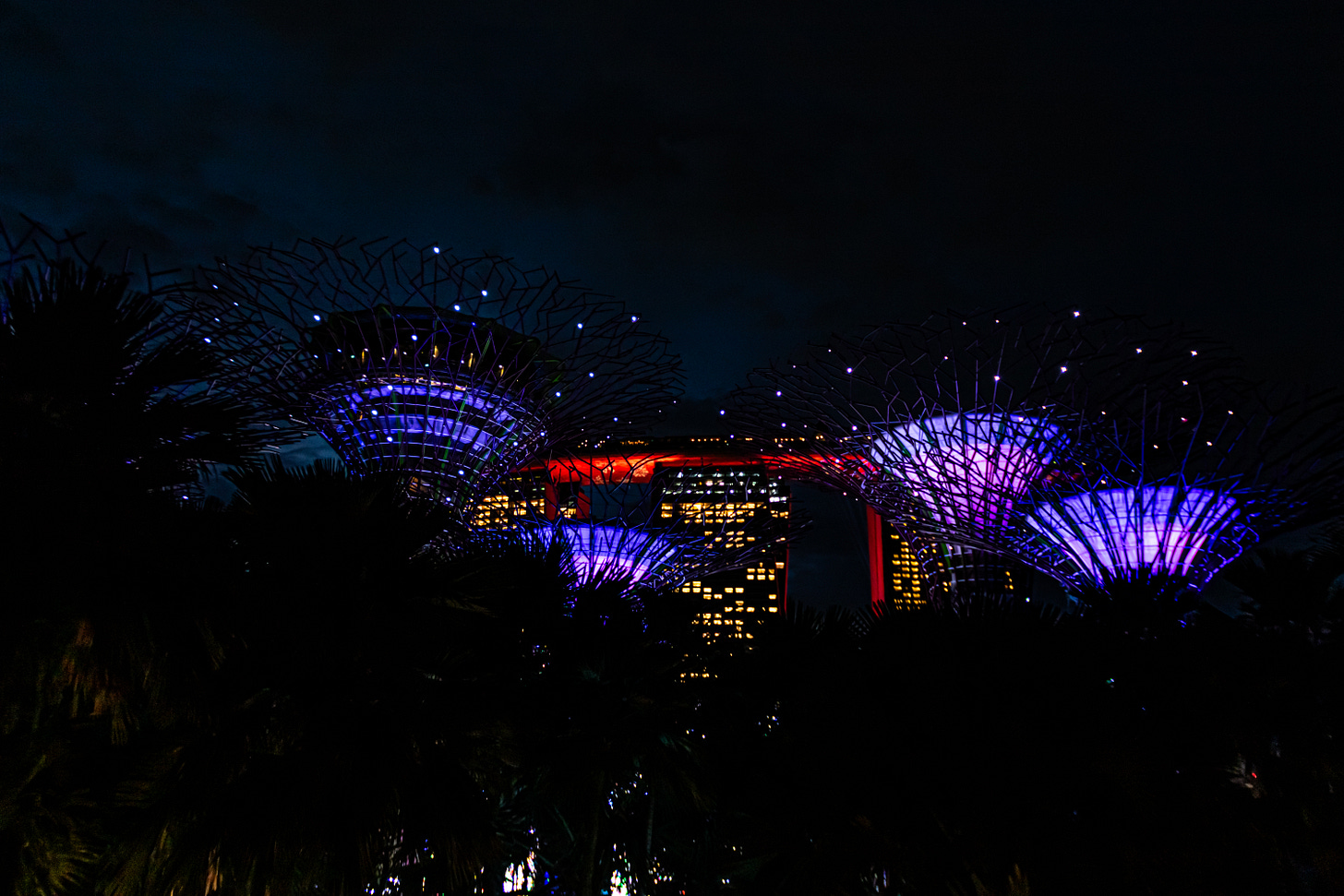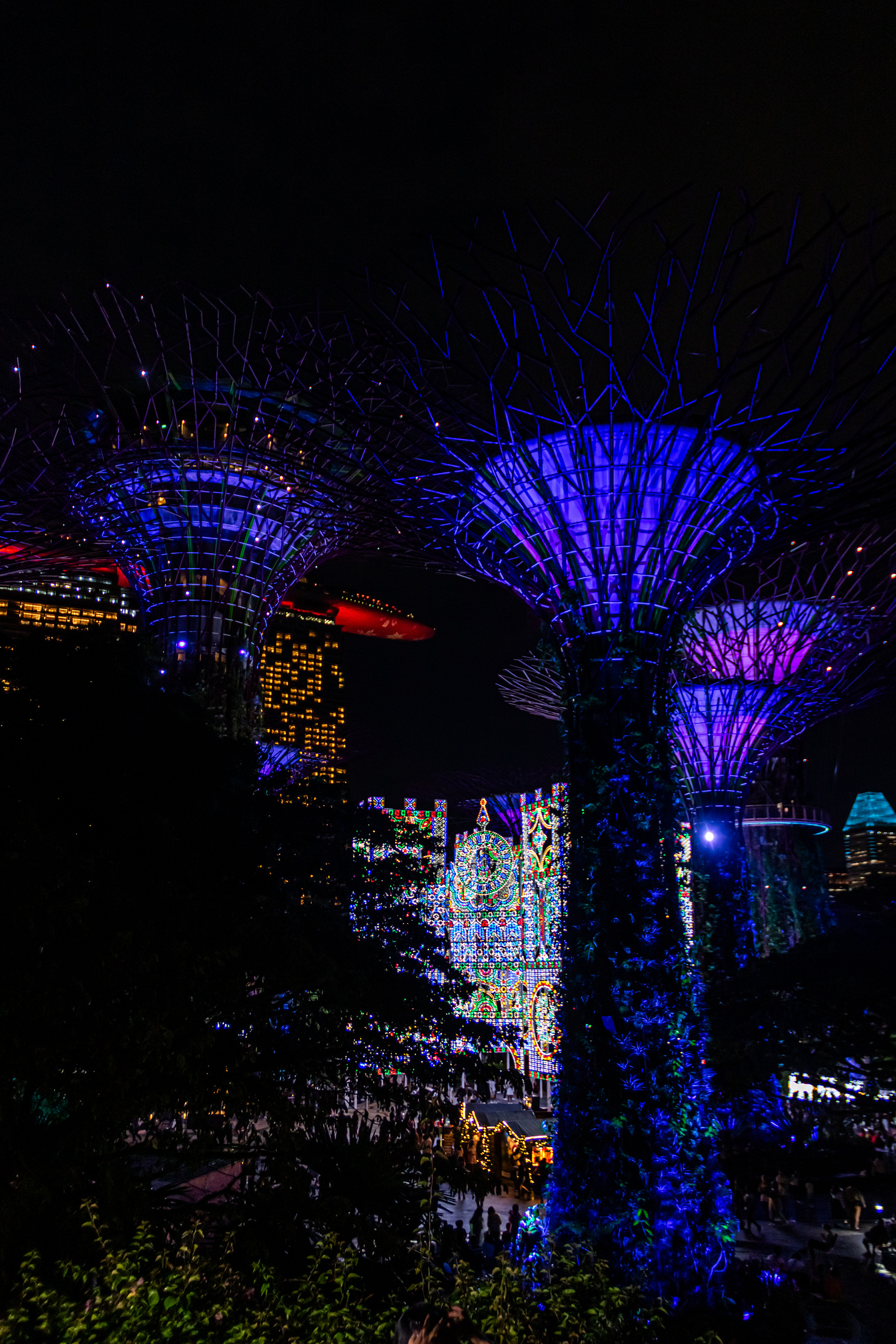In December 2023 I went to Singapore from Kuala Lumpur. I travelled to Malaysia for almost a month, and here you can read about my experience as a volunteer there. Before coming back to Europe I decided to visit Singapore even if it was going to be a very short trip.
I went there by bus, which was an 8-hour ride. I left Kuala Lumpur in the afternoon and arrived there at night. I spent the day after visiting the city and the following afternoon I came back to Kuala Lumpur. There I had a friend from Indonesia waiting for me, we met for the first time in Japan in 2019 and since then we never had the opportunity to meet again, she flew from Jakarta just to spend a couple of days together.
Singapore is a vibrant and dynamic city-state located in Southeast Asia. Renowned for its efficient infrastructure, a stunning skyline, and diverse cultural tapestry, Singapore has established itself as a global economic powerhouse.
Despite its small size, Singapore boasts a rich history and a melting pot of cultural influences, including Chinese, Malay, Indian, and Western elements. This diversity is evident in the city's cuisine, architecture, and traditions.
I arrived around 11 pm on a Sunday, and even if it was late we decided to meet up to eat something before going to sleep. We went to Lau Pa Sat, a market with several stands where you can find every type of food, very typical in this area, we ate some vegetarian fried rice.
Singapore is also known for its commitment to cleanliness and green spaces, with meticulously maintained parks and a strong emphasis on environmental sustainability. Knowing that, the morning after we decided that our first visit would be to the Botanic Gardens.
The Singapore Botanic Gardens is a verdant oasis offering a tranquil escape from the urban hustle and bustle. Established in 1859, it is one of the oldest tropical botanical gardens in the world and holds the prestigious title of a UNESCO World Heritage Site.
Spanning 82 hectares, the botanical gardens showcase a stunning array of plant species, including rare and exotic specimens. The highlights are the National Orchid Garden, the Rainforest, the Ginger Garden, and the Evolution Garden, each providing a unique botanical experience.
The majority of the park is free to enter, and it impressed me with the scenic pathways, serene lakes, and beautifully landscaped lawns within the gardens. We walked around enjoying the relaxed atmosphere and stopped by Swan Lake where we ate something and enjoyed the view. Another thing that impressed me was the presence of a lot of animals like iguanas, birds, roosters and turtles.
Our hostel was in Chinatown, not far from Marina Bay, so we decided to go back there to visit the area and have lunch. Singapore's Chinatown is a vibrant and culturally rich district that reflects the city-state's Chinese heritage. Steeped in history, this bustling neighbourhood seamlessly blends traditional charm with modern elements, creating an immersive experience.
One of the main attractions is the Chinatown Heritage Centre, which provides a glimpse into the lives of early Chinese immigrants in Singapore. The streets are lined with an array of traditional shophouses, now housing a mix of markets, boutiques, and authentic eateries.
Chinatown is renowned for its culinary delights, offering diverse Chinese cuisine. We ate a noodle soup from Hong Kong, very abundant that I wasn’t able to finish it, and as a foodie, I usually don’t leave food on the plate.
After that, we walked to Merlion Park, the Merlion is an iconic symbol of Singapore, representing the city-state's unique blend of modernity and folklore. This mythical creature has the head of a lion and the body of a fish, symbolizing the historic roots of Singapore as a fishing village and the lion, which is associated with the city's original name, Singapura, meaning "Lion City" in Malay.
The most famous Merlion statue is located at Merlion Park, overlooking the Marina Bay Sands and the Singapore skyline. Standing 8.6 meters tall and weighing 70 tons, the Merlion spouts a majestic fountain of water from its mouth. The statue has become a popular tourist attraction, offering breathtaking views of the surrounding landmarks.
From Merlion Park Marina Bay and the Marina Bay Sands are very close, so we walked there. Marina Bay is a dazzling waterfront district in the heart of Singapore, known for its modern architecture, iconic landmarks, and vibrant atmosphere.
At the heart of Marina Bay stands the spectacular Marina Bay Sands, an integrated resort complex that has become an iconic symbol of Singapore. Featuring a distinctive rooftop SkyPark with an infinity pool, Marina Bay Sands offers breathtaking panoramic views of the city skyline.
The Marina Bay area is also home to other notable landmarks, including the ArtScience Museum, with its unique lotus-shaped design, and the futuristic Helix Bridge, a pedestrian bridge resembling the structure of DNA strands.
The main destination of our walk was the Gardens by the Bay because there was a special Christmas light show at Supertree Grove.
Gardens by the Bay is a captivating horticultural wonder, that combines nature with cutting-edge technology, creating a futuristic and surreal landscape. Opened in 2012, Gardens by the Bay has quickly become one of Singapore's most popular and recognizable landmarks.
The highlight of the gardens is the spectacular Supertree Grove, where towering tree-like structures adorned with lush vertical gardens light up the night sky. These Supertrees serve multiple functions, acting as vertical gardens, environmental engines, and even hosting a stunning nightly light and sound show called the "Garden Rhapsody."
Adjacent to the Supertree Grove are the Flower Dome and Cloud Forest, two massive conservatories that house a diverse collection of plant species from around the world.
When we arrived at Gardens by the Bay we found a Christmas village with stands and a lot of Christmas lights. It was not for free, anyway, we were able to find a spot to see the light show with Christmas songs.
After the show, we went back to Chinatown and we returned to Lau Pa Sat for dinner, this time we ate chicken rice, a very typical Singaporean dish.
The day after we had breakfast at Toast Box with the Kaya toast, another typical dish of the area, and after that, the plan was to visit Little India.
We went to Serangoon Road, the main thoroughfare in Little India, which is lined with bustling shops, vibrant street art, and a myriad of businesses ranging from traditional Indian stores to modern boutiques.
The moment we arrived at Little India a huge storm arrived so basically we weren’t able to visit it, we entered a shopping centre to wait for the end of the storm but after a while for us it was better to go directly to the bus station to have lunch there and wait for our bus, and fortunately, we decided to do that.
To book the buses I used to visit Malaysia and Singapore, I used an app, Red Bus, and in this app is possible to find the Google Maps position of the bus stop. In this case, the position was wrong and we went to the opposite part of the city from where we were supposed to go, fortunately, we were able to ask someone and understand that we were wrong and run to the right place in time to catch the bus, the rain saved us.
What I liked the most about Singapore is the mix of colonial houses and huge skyscrapers, it impressed me how they are packed near each other, the mix of Chinese, Indian and Occidental cultures, and that there are many green areas. It is also not as expensive as I thought, if you pay attention you can find cheap places where to eat and cheap hostels where to sleep. For sure a day and a half is not enough to visit Singapore, but it is enough to visit the main attraction and be amazed by it.
I haven’t decided yet where I want to bring you next week, you will discover it in a few days.
See you soon,
Flavio


























China town looks lovely in your photos! Nice post Falvio places in Singapore came through so well.
Awesome, I hope to get to Singapore one of these days, looks so unique. Thanks for the read!